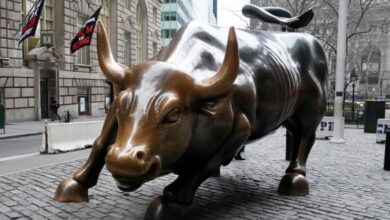This industrial stock report on Friday could signal an economic slowdown. How to trade

With earnings season kicking off, we’ll break down an industrial stock that reports on Friday and how to trade it. Earnings season occurs four times a year when many publicly traded companies release quarterly earnings reports, providing investors with detailed financial information such as revenue, profits, earnings per share and other key metrics. Alcoa Inc. traditionally kicks off the earnings season, being one of the first major companies to report results. However, in recent years, large financial institutions such as JPMorgan Chase, Citigroup and Wells Fargo have typically been the first to report their earnings, signaling the start of earnings season. All three report this week, and while their results will be closely watched, these stocks typically show modest earnings volatility, with JPMorgan Chase averaging a 2% gain over the past decade and Citigroup and Wells Fargo up slightly at 2.5% and 2.4%. Fastenal (FAST), on the other hand, has an average earnings-related volatility of more than 4.3%. The company has underperformed the S&P this year, down nearly 2.5% and is down more than 20% since its late March high. Fastenal vs. S&P 500 Fastenal is a U.S.-based industrial supplies company that primarily distributes fasteners, including screws, nuts, bolts, and related hardware, as well as a variety of industrial and construction supplies. The company operates through both physical locations and an online platform, serving a variety of customers, including the manufacturing, construction, and maintenance industries. The Fastenal Economic Index holds a unique position in the market. The company’s products, which are used in a variety of industries, provide a comprehensive view of economic activity. The company’s sales data, which reflects real-time demand for industrial and construction supplies, is closely related to economic health. Higher purchases of fasteners and related products typically indicate increased manufacturing and construction activity. With locations both in the United States and internationally, Fastenal’s performance also provides valuable insights into regional economic conditions. The recent weakness in Fastenal’s stock price reflects near-term challenges from soft manufacturing markets. While last week’s nonfarm payrolls data looked positive at the high end with 206,000 new jobs, a deeper dive showed 82,000 were in healthcare and another 70,000 were government jobs. Manufacturing employment fell by 8,000, contrary to expectations for a modest gain, adding to Fastenal’s challenges. Top-line revenue growth was below 4%, in line with GDP growth, and profit margins have remained steady at over 15% for the past few years. EPS growth has lagged significantly behind the S&P’s overall earnings growth, making it difficult to justify the company’s 29x earnings multiple, which is higher than the S&P 500 (~23x expected earnings) and its peers (~20x expected earnings). The most recent 13F filing, from March 31, shows that many hedge funds reduced or canceled their positions in Fastenal in the first quarter. Those who did may have been waiting to buy back in at previously attractive levels, but we’re not there yet. The trade With expectations that the stock is unlikely to rally post-earnings, a calendar spread could be a suitable trade. Fastenal, due to some of its actions, had unusual strikes last month. For example, the first strike of the July put expiring was a $62.12 strike put that was trading at $1.25 per contract as of last Friday. That premium could help fund the purchase of a longer-dated $62.50 November put that had an average market price of $3.25. This trade takes advantage of the typical ‘volatility crash’ after earnings, making for a potentially profitable strategy. Important public service announcement: when taking strikes like this, calculate the average market price and use a limit order. The bid/ask spread for the front-month options is ~.10, while the November bid/ask spread is .30, making the actual bid/ask spread on the spread .40. The average market price on the spread is $2.00, while the ask is $2.20, a 10% spread. Using a limit order is especially important when the bid/ask spread is wider, as here. DISCLOSURE: (None) All opinions expressed by CNBC Pro contributors are solely their own and do not reflect the opinions of CNBC, NBC UNIVERSAL, their parent companies or their affiliates and may have been previously disseminated by them on television, radio, the internet or other media. THE ABOVE CONTENT IS SUBJECT TO OUR TERMS AND CONDITIONS AND PRIVACY POLICY. THIS CONTENT IS PROVIDED FOR INFORMATIONAL PURPOSES ONLY AND IS NOT INTENDED TO BE FINANCIAL, INVESTMENT, TAX OR LEGAL ADVICE OR A RECOMMENDATION TO PURCHASE ANY SECURITIES OR OTHER FINANCIAL ASSETS. THE CONTENT IS GENERAL IN NATURE AND DOES NOT REFLECT ANY INDIVIDUAL’S UNIQUE PERSONAL CIRCUMSTANCES. THE ABOVE CONTENT MAY NOT BE SUITABLE FOR YOUR PARTICULAR CIRCUMSTANCES. BEFORE MAKING ANY FINANCIAL DECISION, YOU SHOULD CONSIDER SEEKING ADVICE FROM YOUR OWN FINANCIAL OR INVESTMENT ADVISOR. Click here to view full disclaimer.




